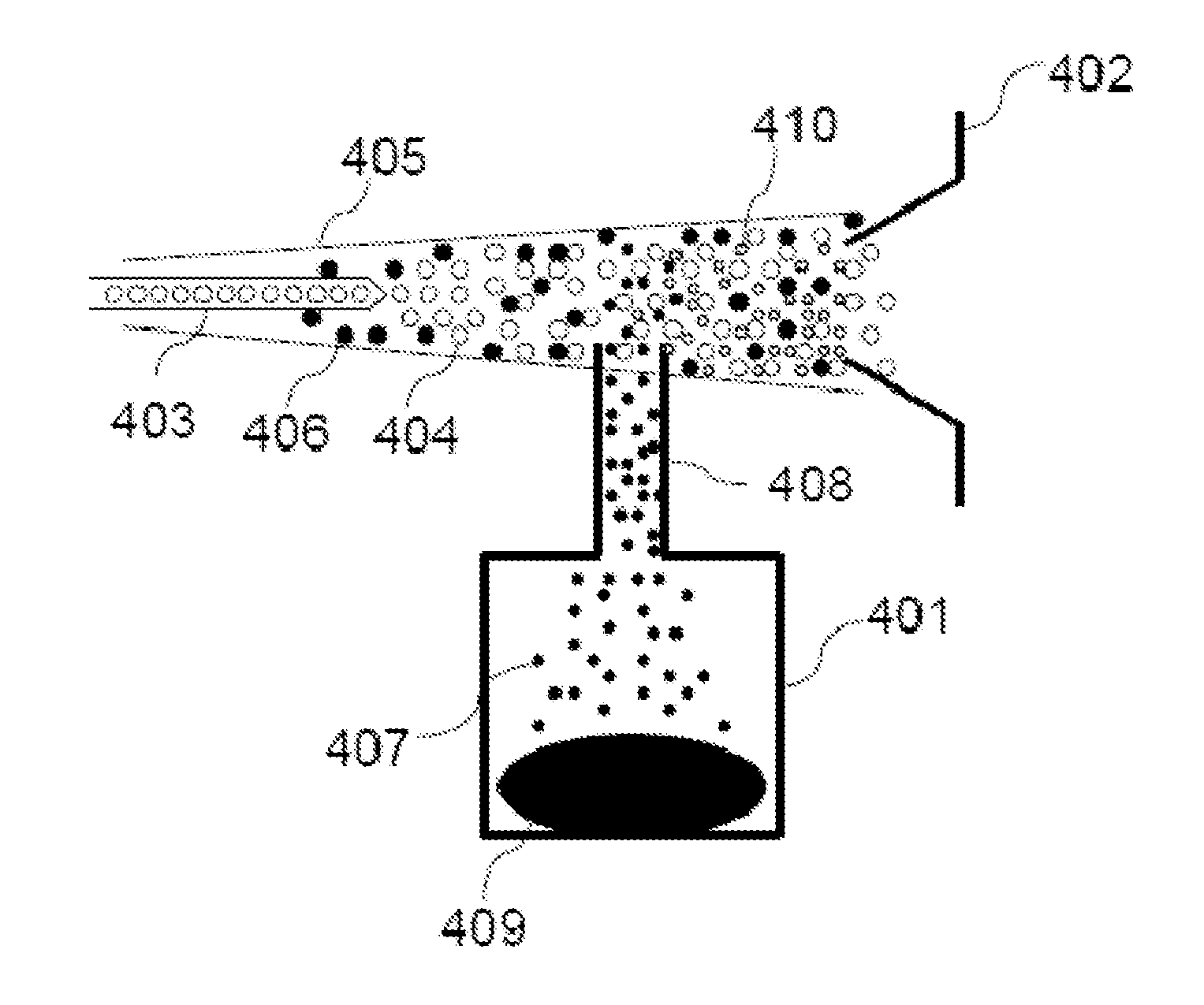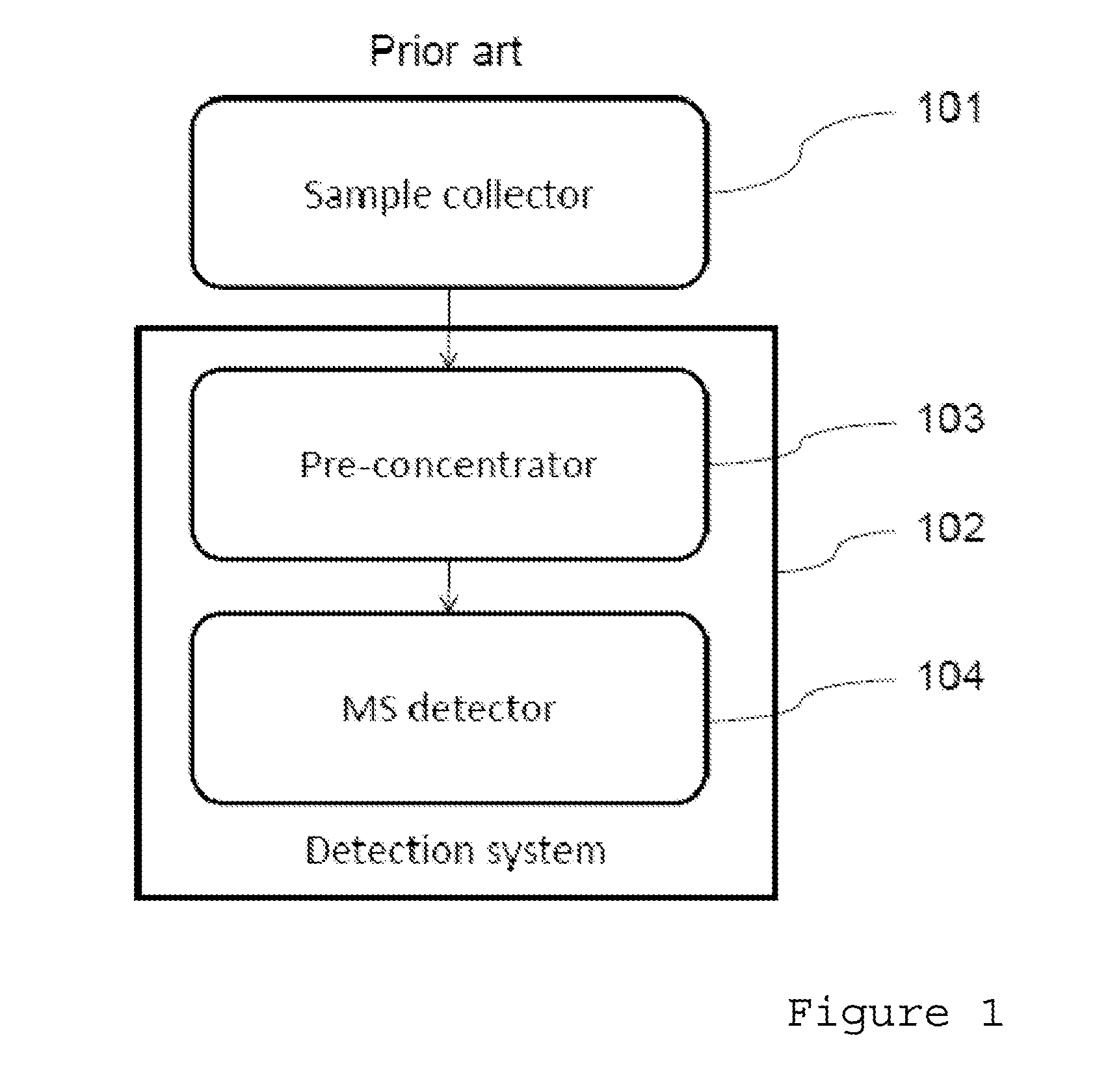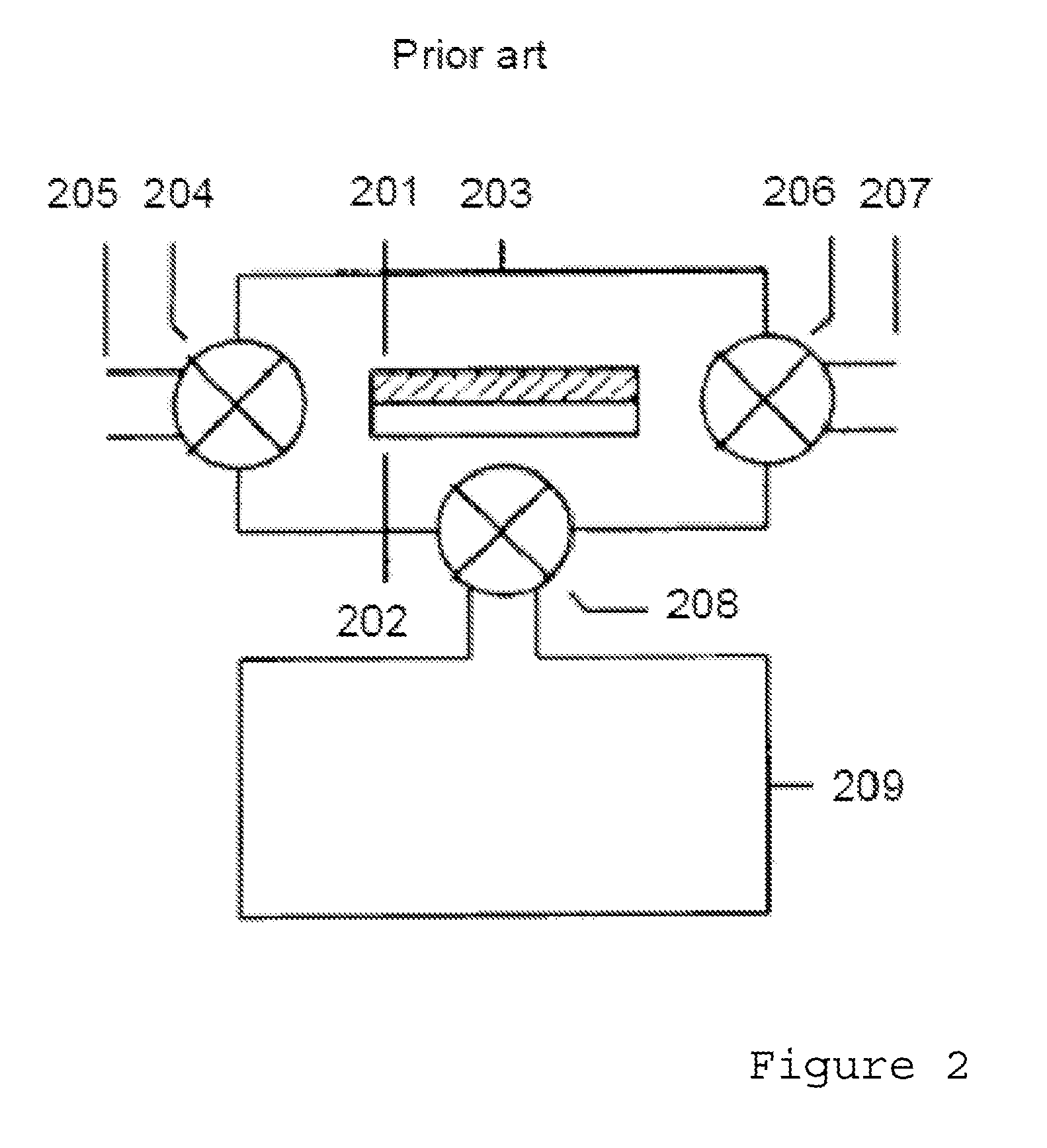Sample Collection and Detection System
a detection system and sample technology, applied in the field of sample collection and detection system, can solve the problems of inability to take the detector system, the cost of the disclosed hand-portable sample collection device is relatively high, and the cost of these units limits the deployability, so as to achieve quick and effective separation
- Summary
- Abstract
- Description
- Claims
- Application Information
AI Technical Summary
Benefits of technology
Problems solved by technology
Method used
Image
Examples
Embodiment Construction
[0032]A detailed description of preferred exemplary embodiments of the invention is provided with reference to FIGS. 3 to 10. It will be understood that these embodiments are provided to assist in an understanding of the teaching of the invention and is not intended to limit the scope of the invention to the specifics of the features described herein. Furthermore it will be understood that where elements or features are described with reference to any one specific embodiment or Figure that these could be interchanged with or replaced by those of other embodiments or Figures without departing from the scope of the claimed invention.
[0033]It will be appreciated that most samples collected in a ‘real-world’ environment are ‘messy’ e.g. waste water, fuel oil spillage. Samples collected in during building or vehicle searches are generally complex chemical matrices comprising hundreds or even thousands of chemical components. The presence of pollutants, fuel oils and other chemical interf...
PUM
 Login to View More
Login to View More Abstract
Description
Claims
Application Information
 Login to View More
Login to View More - R&D
- Intellectual Property
- Life Sciences
- Materials
- Tech Scout
- Unparalleled Data Quality
- Higher Quality Content
- 60% Fewer Hallucinations
Browse by: Latest US Patents, China's latest patents, Technical Efficacy Thesaurus, Application Domain, Technology Topic, Popular Technical Reports.
© 2025 PatSnap. All rights reserved.Legal|Privacy policy|Modern Slavery Act Transparency Statement|Sitemap|About US| Contact US: help@patsnap.com



